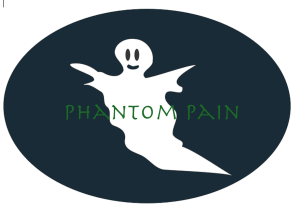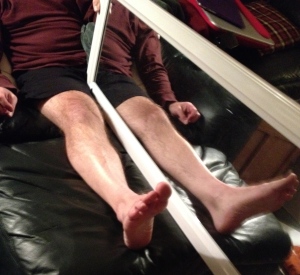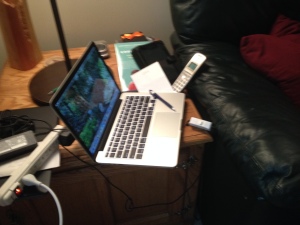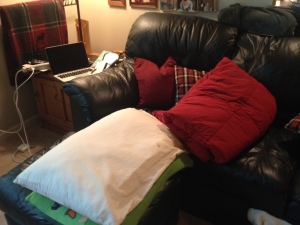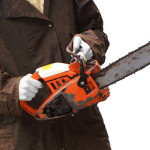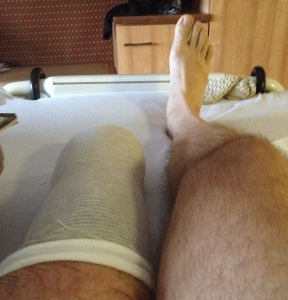 My eyes opened. In a bubble above me I see the silhouettes of nurses looking down at me, telling me to go back to sleep. I doze off, then I come to again. I don’t feel anything from my waist down due to the spinal, but I am well aware of what just happened. My eyes are drawn like magnets to my feet. The blanket told the story, a sunken void where my left foot once was. My fears were now faced – not only did I go through with the amputation, but I survived the first evidence that the leg had been taken.
My eyes opened. In a bubble above me I see the silhouettes of nurses looking down at me, telling me to go back to sleep. I doze off, then I come to again. I don’t feel anything from my waist down due to the spinal, but I am well aware of what just happened. My eyes are drawn like magnets to my feet. The blanket told the story, a sunken void where my left foot once was. My fears were now faced – not only did I go through with the amputation, but I survived the first evidence that the leg had been taken.
How did I choose when to amputate?
Two years ago I knew I would amputate my lower left leg. At that time I had just completed a six-month recovery of the sixth surgery on my ankle. My life had been turned upside down; not only had I lost the use of my leg due to pain, I had lost my career. So I had to make some decisions. At the time what seemed most important was to find a job and feel like a productive husband and father. As fate would have it a flier showed up in my mailbox and the wheels began to turn. The flier was for a one-year certificate program to become a medical coder. Feeling I couldn’t let another year go by and this being something achievable, I signed up and began classes the following Tuesday. One year later I was then faced with seeking a job or getting my leg amputated. I chose to strike while the iron was hot and seek a job. At that point I was managing the pain with crutches and felt I could get through another year. I had worked hard to put myself in the right place at the right time and had to accept the job being offered to me. I told myself that I would take a year to settle into the job, get job security and then have my leg amputated.
Almost one year later, in early May, my wife and I were out for a quiet anniversary dinner. The conversation turned to how serious I was about amputating my leg and what my honest thoughts were on the timing for having the amputation. The dinner ended in the final discussion that set the wheels in motion and there was no turning back. We were both committed to making this amputation happen and most importantly my wife was committed to fully supporting me though the surgery and recovery. So, I bit the bullet and made the appointment to request my lower left leg be amputated.
Despite all the pain and already having mourned losing the use of my leg, the decision to amputate was one of the most difficult decisions I’ve ever made. I had been in pain for six years, endured six surgeries and had been using crutches to walk full time for the past two years. Still, how do you give up on your leg, have it cut off and tossed away like a piece of garbage? It was a decision I had to make and one that I made to not only improve my life, but the lives of my wife and kids as well. I would be a better one-legged husband and father than one always fighting pain.
Can you prepare for a leg amputation?
Sitting in the examining room two weeks post amputation with my exposed stump resting on the table, I said to my surgeon “there are no words for the weirdness I feel in the leg.” His response was, “nothing in life can prepare you for going through this.” I do agree that nothing could prepare me for the post amputation pain. It is unlike anything I have ever felt and I have not yet been able to put words to it. I do, however, feel I was as prepared as I could be to have the amputation.
For two years this amputation has been on my mind and while I actively spent the past three months leading up to it preparing, I had really been preparing for the past two years. Two years ago I was so emotionally unhealthy that I don’t know if I could have mentally recovered from amputation. The fact is, I went out and did what I needed to do to set my life up to have the amputation go as smoothly as it realistically could go. Going into surgery I was in the right mindset, mentally and realistically prepared for amputation. At this point I am not scared of how I will adjust to having one leg and facing using crutches or a prosthetic every day for life. I have done it! Yes, I will hopefully be able to use a prosthetic leg, but realistically you can’t go into a leg amputation with the idea that you will get a prosthetic leg and life will be perfect. You have to accept the lifelong challenge that you will need to used some kind of assistive device (prosthetic/crutches) to walk every day for the rest of your life. I have used the past two years to accept and learn how to accommodate my life as an amputee.
I have been able to quickly hop back on to my crutches and fully immerse myself back into life. Something I believe has been critical to my recovery and what the past two years have given me is confidence and a positive outlook on my life as an amputee.
I am grateful I had the time to prepare as most amputees do not get that luxury.
How did I go through with it?
To be honest I wasn’t sure how I would go through with it. The day before was very difficult; I would find myself crying for no reason and I was afraid I might not stay strong. That night I requested to have dinner alone with my wife – yes, the conversation was solely about the amputation, not only how I felt, but how my wife felt as well. This conversation was extremely therapeutic for both of us. At that point I knew I was strong and would remain strong not only for myself, but my wife and kids too. I was going to be okay! In the end having the right state of mind was the key. From the start I knew the only way to get through having an amputation was to have a positive attitude, good sense of humor and to never ever feel sorry for myself.
My only fear left was the waiting around on the day of the surgery. I had to be at the hospital at 8am and luckily things moved quickly. Before I knew it I had awakened from the surgery. On the way to my hospital room I passed the nurse who would be taking care of me. She said “how are you doing?” I responded “remarkably well for just having my leg cut off.” She laughed, my wife stated “he has an excellent sense of humor” and I knew I would be just fine. My determination to stay positive was infectious among my family and the hospital staff tending to my needs. I can’t stress enough how beneficial that was to pushing through those first days. I left the hospital with every nurse and physical therapist who worked with me stating “he will do excellently, because he has such a positive attitude”.
Without the amazing support of my wife and kids, my attitude and determination would not have been possible. My wife’s support never waivers and without that the amputation would never had happened.
The Surgery 9/24/14
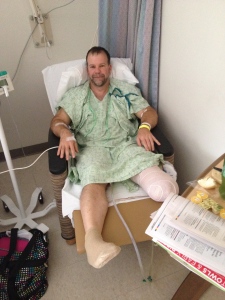
Day after surgery!
The damage was in my lower leg, ankle and foot, so I had a below-knee amputation (LBKA). My left leg was removed six inches from the top of my tibia. The surgeon cut thought the front of my leg at the six inch mark, though the tibia and fibula, leaving a flap of calf muscle and skin from the back of the leg. The tibia and fibula was bridged together using a piece of the removed fibula. Next the muscle was folded forward over the end of the bones creating padding. The padding will help make wearing the prosthetic more comfortable. Lastly the flap of skin was folded forward over the muscle and stapled to the skin in the front of my leg, creating a large incision approximately 2/3 the circumference of the stump. 24 staples to be exact! A well-padded plaster splint was then placed on the remaining part of my leg holding the knee straight and for pain control.
That is the simple layman’s description. It’s obviously a whole lot more complicated as there are veins, arteries, nerves and tendons all involved.
If you have the stomach for it, the following link is a video of someone having the exact amputation surgery I had. I watched it before my surgery so I would know exactly what would be done to me.
https://www.youtube.com/watch?v=t0eR7r4JEkA
The first days of being an amputee
Day 2 – I was afraid to move the residual leg. That did not last long as the nurses were quick to get me out of bed and into a chair. Once I moved the leg I was fine and ready to go. Soon Physical Therapy came to see me. To their surprise, I was eager to get up and take a walk with my crutches. At first they were hesitant to let me go, but soon realized I was more than capable of navigating on one leg and crutches.
Day 3 – Much the same as day 2.
Day 4 – The orthopedic PA came in and removed the splint. While I knew the splint would be removed, it was comforting to have it on and I was hoping to keep it for as long as possible. As he began to remove the splint my eyes were fixated on the stump. Seeing the exposed stump was difficult and I wondered if I would ever get used to seeing it. It looked like something out of a horror movie. Dressings were put on the wound and the stump was wrapped with an ace bandage. Once again I was eager to get up on the crutches and take walks up and down the halls. Later that day I met with a prosthetist, who placed a stump shrinker on the stump. The stump shrinker is a compression-type sock that fits over the end of the stump and helps to minimize swelling. It prepares the stump to fit into the prosthetic.
Day 5 – I was discharged to go begin my life as an amputee. The first few days were not so great. The narcotics were not well-managed and caused me to become very sick. I was sleeping 24/7 and I wound up back in the hospital on day 8 with pneumonia. After three additional nights in the hospital I was released and on the road to recovery.
The Pain
The post-op pain was massive and difficult to manage even in the hospital. Ten days post-op, I was able to stop all pain medications as the pain became tolerable. At this point the nerve and phantom pain can get pretty intense. I have found that the best way to help with it is to stay busy and active. The evenings and nights are when the phantom pain is at its worst. That’s when my mind relaxes and the pain becomes the focus.
Road to Recovery!
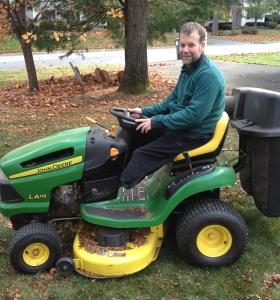
Excellent Therapy!
3 1/2 weeks post surgery
Three weeks ago I walked into the hospital and approximately four hours later woke up an amputee. Somehow stating it like that seems unreal, yet I sit here today minus my lower leg and other than the phantom pain I feel in my missing leg, my life really doesn’t seem so different. I am well aware of the many challenges ahead, but for now I take one day at a time. I am truly grateful I had the luxury to prepare and ability to have a positive attitude to power though this life-changing surgery. I had the benefit of being 100% mobile on crutches, making a huge difference in the ability to jump back into life. While the full benefits of the amputation will take months to reap, I have already obtained one major goal I had in amputating – that goal being that I am much more mobile than I was with the damaged leg. I now pop up on my crutches and go, no painful useless appendage to decide what to do with or get in my way. That is an amazing and freeing feeling!
Thank you for reading! Please subscribe to never miss a post or come back in to weeks when I explain my phantom pain.
Like my Facebook page to follow my recovery.
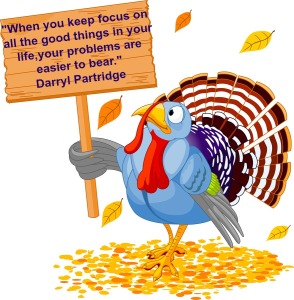 For the past seven weeks, I have experienced life as a one-legged man. While I have spent years using crutches, of which plenty of that time was non-weight bearing, none of it quite compares to having the leg missing. Needless to say it has been a humbling experience and one that has made me realize how grateful I should have been for the ease of doing so many things, which have now become so difficult to do. It has also made me realize how grateful I am for what I still have and simple things such as a pair of crutches. My leg has been replaced with a pair of crutches, something most people would avoid needing at any cost, however my crutches have become my most valued possessions and something I am extremely grateful to have. Without them, I would have lost my freedom and independence.
For the past seven weeks, I have experienced life as a one-legged man. While I have spent years using crutches, of which plenty of that time was non-weight bearing, none of it quite compares to having the leg missing. Needless to say it has been a humbling experience and one that has made me realize how grateful I should have been for the ease of doing so many things, which have now become so difficult to do. It has also made me realize how grateful I am for what I still have and simple things such as a pair of crutches. My leg has been replaced with a pair of crutches, something most people would avoid needing at any cost, however my crutches have become my most valued possessions and something I am extremely grateful to have. Without them, I would have lost my freedom and independence. I have been blessed with three healthy, smart and good kids. They each are special in their own way. While they certainly have their trying moments, I am very fortunate to have my kids and they have given me joy and pleasure every day since they were born. I am also blessed to have a wonderful wife. There’s no question that when going through an illness or disabling condition you learn if you’ve married the right person. I most certainly did; my wife’s support has never wavered and I could not have ever got through the past six years without her by side.
I have been blessed with three healthy, smart and good kids. They each are special in their own way. While they certainly have their trying moments, I am very fortunate to have my kids and they have given me joy and pleasure every day since they were born. I am also blessed to have a wonderful wife. There’s no question that when going through an illness or disabling condition you learn if you’ve married the right person. I most certainly did; my wife’s support has never wavered and I could not have ever got through the past six years without her by side. After years of surgeries that were unsuccessful ending in disabling pain, I could have easily given in, taken to my couch and collected disability for the rest of my life. Sadly, I have met plenty of people who reported that their disabled spouses have taken to their beds instead of accepting their losses, using what they still have to get out and live their lives. Every day, while I am out living my life, I am grateful that I had the strength and perseverance not to allow my disability to destroy not only my life, but the lives of my family as well.
After years of surgeries that were unsuccessful ending in disabling pain, I could have easily given in, taken to my couch and collected disability for the rest of my life. Sadly, I have met plenty of people who reported that their disabled spouses have taken to their beds instead of accepting their losses, using what they still have to get out and live their lives. Every day, while I am out living my life, I am grateful that I had the strength and perseverance not to allow my disability to destroy not only my life, but the lives of my family as well. During times of sickness and need, people outside our immediate families can provide necessary support. While going through my recent amputation surgery, my extended family members were a huge support, not only to me, but in giving my wife some much needed breaks. I am grateful to all my family members who visited, called, texted and kept me company late at night when I was feeling like crap and didn’t want to be alone.
During times of sickness and need, people outside our immediate families can provide necessary support. While going through my recent amputation surgery, my extended family members were a huge support, not only to me, but in giving my wife some much needed breaks. I am grateful to all my family members who visited, called, texted and kept me company late at night when I was feeling like crap and didn’t want to be alone. My family and I are very fortunate to live in a warm comfortable home where we have everything we could ever need and more. With so many families in this world living without shelter, warmth, proper clothing or food, we are the luckiest people in the world. This is something I often take for granted and I need to learn to be grateful for this every day.
My family and I are very fortunate to live in a warm comfortable home where we have everything we could ever need and more. With so many families in this world living without shelter, warmth, proper clothing or food, we are the luckiest people in the world. This is something I often take for granted and I need to learn to be grateful for this every day.